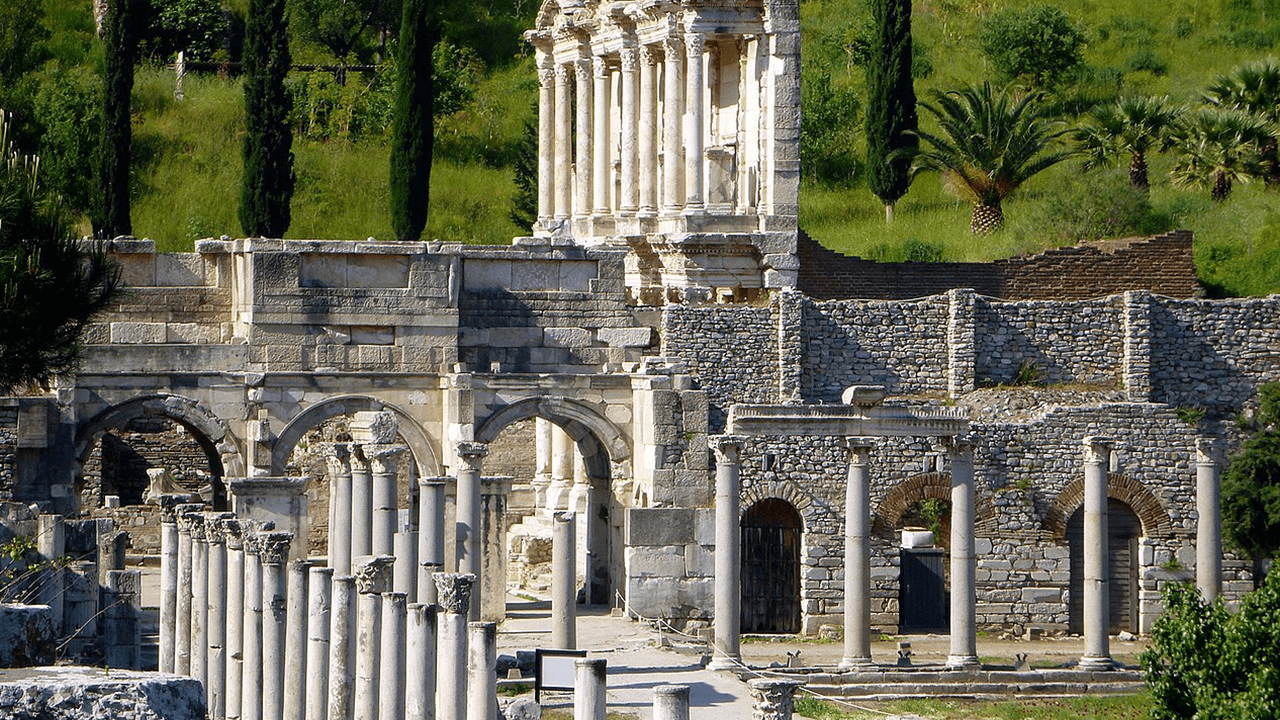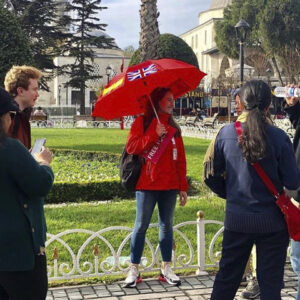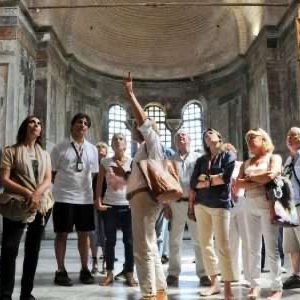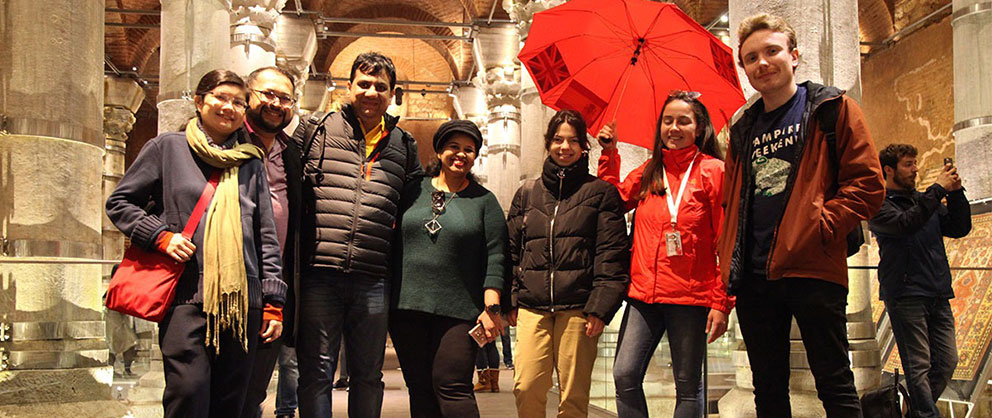The Arcadian Way: The Splendor of the Entrance to Ephesus
The Arcadian Way is one of the most majestic and iconic streets of ancient Ephesus. Stretching from the Harbor Baths to the Great Theater, this street served as the main entrance for merchants and sailors arriving in the city. Designed with magnificent details and adorned with marble slabs and colonnades, the Arcadian Way reflects the grandeur of the city and its commercial and cultural importance.
History and Construction of the Arcadian Way
Originally built in the Hellenistic period, the Arcadian Way was restored in the 4th century AD during the reign of Emperor Arcadius, from whom it takes its name. The restoration gave the street a length of approximately 530 meters and a width of 11 meters, making it one of the main arteries of Ephesus. On both sides of the street were shops and galleries, with monumental gates in the form of arches inviting visitors to explore the city.
Columns and Statues of the Apostles
One of the most notable features of the Arcadian Way was the four tall columns that supported statues of the Apostles. These statues commemorated the presence of Christianity in the city and added a touch of solemnity to the street’s design, reinforcing the cultural and religious blend that characterized Ephesus.
One of the First Illuminated Streets in the World
The Arcadian Way was one of the first streets in the world to feature night lighting, along with streets in Rome and Antioch. A total of 50 lamps illuminated its colonnades, allowing pedestrians to move easily at night. Under the marble slabs, sewage channels were built to keep the street clean and free of standing water.
Innovation in Lighting and Sanitation
The presence of streetlights and an efficient sewage system is a testament to the advanced urban planning of Ephesus. These innovations made the Arcadian Way stand out not only for its beauty but also for its functionality, enhancing the lives of residents and visitors to the city.
Prominent Buildings on the Arcadian Way
Along the Arcadian Way were important buildings, including the Theater Gymnasium and the Harbor Baths. These buildings not only served practical functions but also contributed to the grandeur of the entrance to Ephesus.
The Theater Gymnasium
Near the theater is the Theater Gymnasium, a second-century AD building with two floors and numerous rooms. This space was used as a sports center, providing citizens with a place to practice physical activities and improve their fitness. The combination of gymnasium and theater reflects the importance Ephesian society placed on both physical and cultural well-being.
The Harbor Baths or Baths of Constantine
At the beginning of the Arcadian Way, near the harbor, are the Harbor Baths, also known as the Baths of Constantine. This building, constructed in the 2nd century AD, was renovated under Emperor Constantine and is considered one of the largest structures in Ephesus. With dimensions of 160 meters in width, 170 meters in length, and 28 meters in height, the baths provided Ephesians with a place for hygiene and socialization.
Commercial and Cultural Importance of the Arcadian Way
The Arcadian Way was a vital street in the commercial and cultural life of Ephesus. As an access route from the harbor, it served as an entryway for merchants and visitors from various parts of the world, becoming a point of cultural exchange. The architecture and design of the street showcased the city’s power and wealth.
A Center for Meeting and Trade
The shops and galleries along the Arcadian Way offered visitors a variety of products and services, fostering commerce and exchange. The street was a meeting place for residents and a display of the diversity that characterized Ephesus.
Tips for Visiting the Arcadian Way
- Location: The Arcadian Way extends from the Harbor Baths to the Great Theater, making it one of the main routes for exploring the ruins of Ephesus.
- Best Time to Visit: Morning and sunset are ideal for avoiding the heat and enjoying the natural lighting on the marble colonnades.
- Respect the Site: As a historical site, it’s important to respect the designated areas and avoid touching the structures to help preserve their integrity.
Conclusion
The Arcadian Way is much more than a street in ancient Ephesus; it is a testament to the architectural grandeur and urban innovation of its time. From its illuminated colonnades to its monumental buildings, the Arcadian Way represents the cultural and commercial wealth of one of the most important cities of the ancient world. Visiting this avenue is an opportunity to immerse oneself in the history of Ephesus and walk along a path that has witnessed centuries of activity and transformation.












3 thoughts on “The Arcadian Way”
★★★★★
Looking for an authentic and enriching experience? ‘The Arcadian Way’ is the place to be! Absolutely worth the visit.
★★★★★
My journey to ‘The Arcadian Way’ was nothing short of amazing. A must-see for anyone exploring the area!
★★★★★
Discovering ‘The Arcadian Way’ was one of the highlights of my trip. Don’t miss out on this gem!